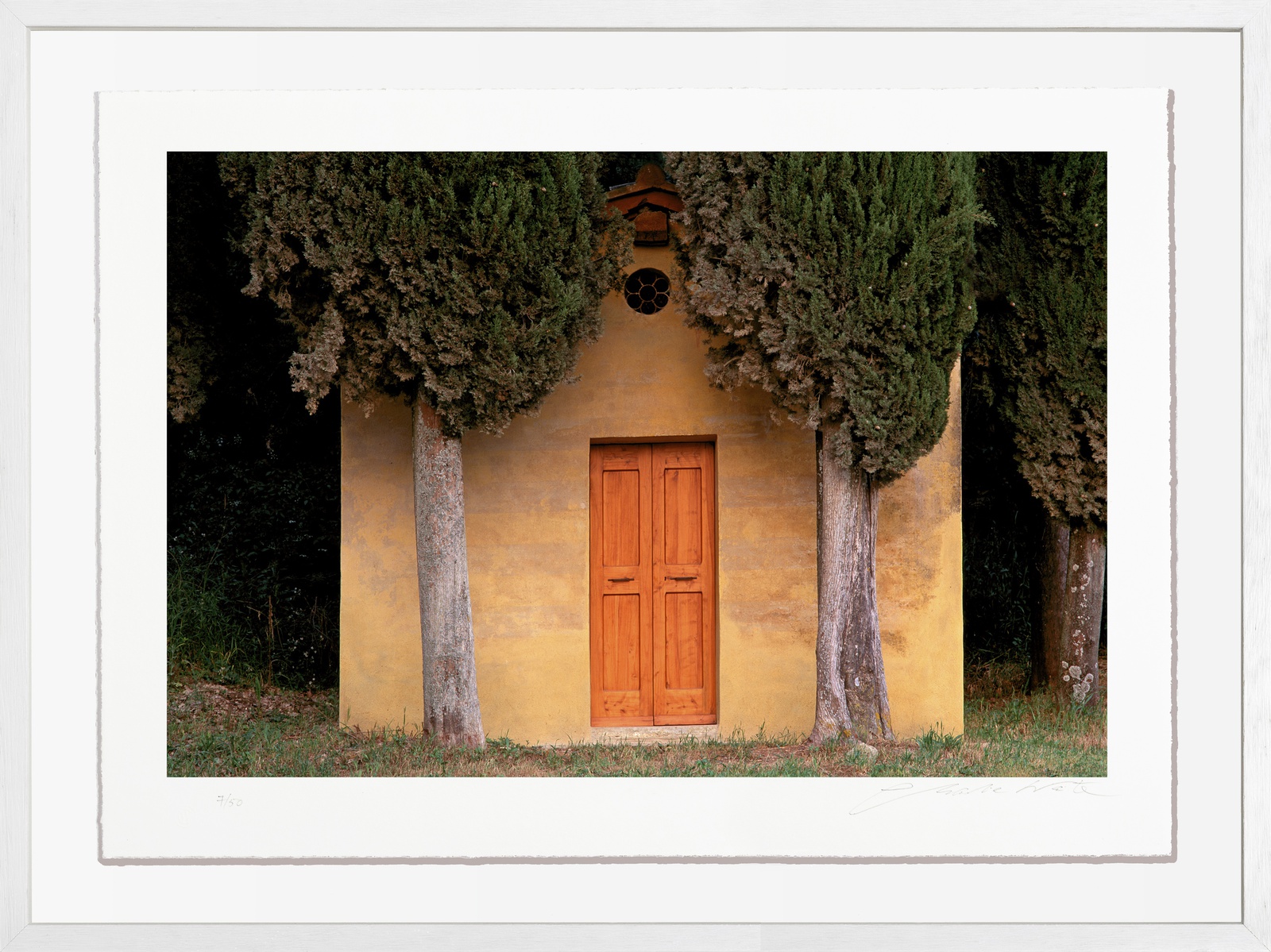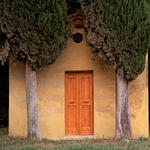
Charlie Waite's archival pigment prints are float-mounted in a white box frame moulding and framed behind museum art glass
Charlie Waite
Archival Pigment Print
Artist Signature Bottom Right Below Print
Artist's Blind Stamp Below Edition Number Left Side
Deckled Edges To Print 68cm Wide 49cm High
£1550
Click FURTHER IMAGES below for framing. Artist story & provenance see below...
“To either side of the Via Cassia, which runs from Siena to Rome, there is a network of unpaved roads, each known as a strada bianca. There must be many hundreds of kilometres of these white roads and you can always tell who lives along one of them, as their cars are usually coated with a dusting of fine white powder. Farmers, who, over the centuries, became accustomed to working in this lumpy landscape, habitually used the roads. Now the wonderful network provides access to the thousands of converted farmhouses in the area.
Every year for the past twenty I have explored these tracks, and I have become fond of one in particular: the road to Lucignano d’Asso, a hamlet near Asciano. I had seen this chapel several times, always in harsh sunlight, which created too much contrast at the end of the day. On an unusually chilly spring morning, I found it virtually shadowless as I hoped. But what lies behind my love of this modest little place? The two tired-looking cypress trees have been planted unusually close to the chapel and the orange door was new since I was here last. I have always wondered about the third cypress, and while some may say it makes no difference to the photograph, I feel it might have been better without it. But to have tightly cropped into the chapel on the right would have cramped it, and to remove it through imaging software was not something I cared to do. So there the third cypress tree remains.
I often enjoy covering over small elements within a photograph to demonstrate the effect their removal has on the overall cohesion of the image. The glassless window certainly plays a part and with my thumb placed over it, an element is removed that contributes to the chapel’s charm. You could argue that I might have made the photograph even if there had been no window. But the round window and the hint of the ridge end between the twin cypress trees are significant to me. Considerations of this nature should in my view preoccupy the landscape photographer all the time. The omission or inclusion of the smallest element in an image can have a considerable bearing not only on one’s own evaluation of the image to be made, but also on the response that will be drawn from the spectator. After packing up, I tried the door of the chapel. It was locked. I would have liked to have gone in and sat for a while. You could say this photograph of Lucignano d’Asso holds the same special mystery for me as it might for the spectator; neither of us knows what is inside.” Charlie Waite


